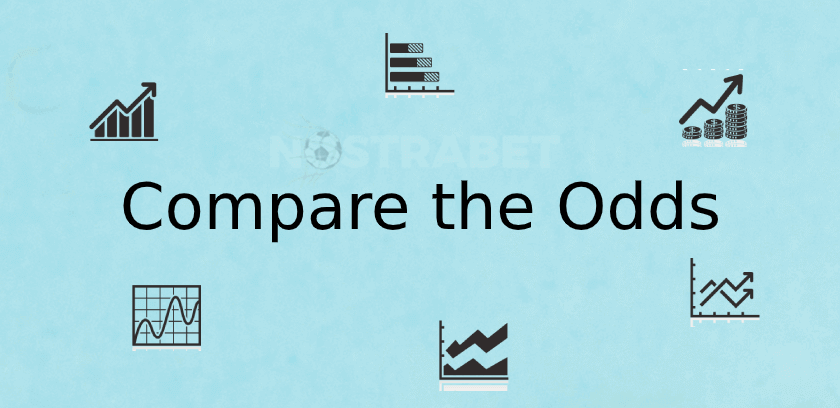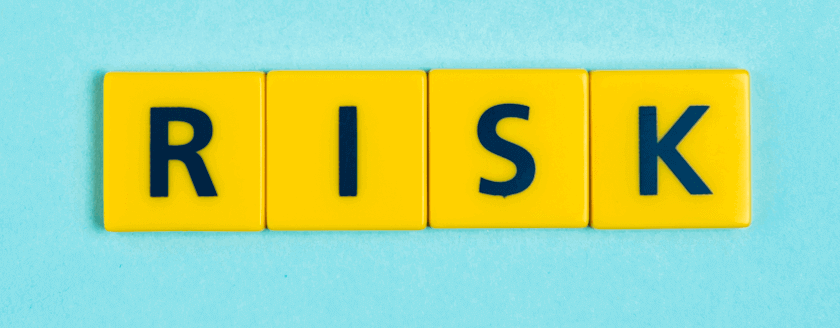Bookmaking, as we commonly understand it today, dates back to Roman times. The first bookies would offer an indication of the likelihood of a specific outcome for betting on gladiator matches and chariot races. It’s been quite a journey from there to the ritzy online sportsbooks of modern times.
Whenever you’re betting on sports, whether in ancient Rome or today, you’ll find a range of odds available. Each bookie will often quote you different odds for the same events. They’ll usually be pretty similar, in most situations; there are only rare instances in which they will be the exact same.
So, why is that? In order to understand the differences in the odds level and find the bookmakers with the best values, you’ll need to know more about odds themselves.
Understanding The Odds

Odds are, essentially, a way to express probabilities. There are two basic kinds of “odds” that you can speak of in gambling. First, you have the real odds. This refers to the probability that something will actually happen. For example, if you’re flipping a coin, the odds of it being heads are 1/1 fractional or 2.0 decimal—one in two.
Then, you have bookmaker odds. Bookmaker odds reflect what a bookie will actually pay you for a winning bet. For example, bookmaker odds on a coin flip being heads might be 9/10 fractional (1.9 decimal odds). This means that a bet of £1 would pay £/$/€1.9 (including your stake), for a £/$/€0.9 profit.
You may have picked up that the bookmaker odds for the coin flip (9/10) are lower than the real odds (1/1). This is very much deliberate. As a rule, bookmaker odds aim to be lower than real odds. This helps bookies to keep their books balanced. A balanced book yields bookies profits, regardless of the outcome.
Conversely, a bookmaker offering odds that match the real odds of an event won’t stay in business for long. Let’s say you’re taking wagers on a coin flip. You take £/$/€100 in wagers for heads, and £/$/€100 in wagers for tails. £/$/€200 in total wagers; the coin lands on heads.
If you offered wagers at odds of 1/1, then you’d have to pay out £/$/€200 for the £/$/€100 in heads wagers. This would leave you with nothing for your troubles. On the contrary, by offering odds of 9/10 on both sides of the bet, you guarantee a payout of £/$/€190 to whichever side wins. That’s a profit of £/$/€10 or 5%. Consequently, bookmakers need to price their odds strictly below the real odds.
Calculating Coefficients
A useful metric when looking at different odds is the bookmaker coefficient. The coefficient is a fairly straightforward concept. It’s the inverse of the odds, or P, for probability. Therefore, coefficient = 1/P.
You can calculate the coefficient both for real and implied odds. The first would be the coefficient without any fees and commissions. The second corresponds to the coefficient of the actual bookmaker odds available.
Using the same example as above, the coefficient for a coin flip is easy to calculate. Since there are two outcomes, the chances of each outcome are 0.5, or 50%. The coefficient would then be 1/P = 1/0.5 = 2. The bookmaker odds, though, stand at 9/10. To calculate the coefficient, you’ll need to get a P-value from the odds.
Odds of 9/10 have an implied probability of 10 out of 9+10 = 19. The coefficient would be 1/(10/19) = 1.90.
Let’s use a more realistic example in terms of sports betting. Say two teams are facing off in soccer. Experts agree that the home team has a 60% chance to win. The away team is given a 30% chance, and there’s 10% of a draw.
The coefficient for these estimated real odds would be 1/0.6 = 1.66, for the home team, 1/0.3 = 3.33 for the away, and 1/0.1 = 10.0 for a draw.
You then check out two different sports betting sites. Site A is offering the home team to win at 1/2 odds, away team to win at 5/4 odds, and the draw at 8/1. Site B offers the home team to win at 2/5 odds, away team to win at 11/8 odds, and the draw at 6/1.
The P values for Site A would be 2/(1+2) = 2/3 = 0.66, 4/(5+4) = 4/9 = 0.44, and 1/(8+1) = 1/9 = 0.11. P values for Site B would be 5/(2+5) = 5/7 = 0.71, 8/(11+8) = 8/19 = 0.42, and 1/(6+1) = 1/7 = 0.14.
Therefore, the coefficient for home, away and draw would be 1.51, 2.27, and 9.09, for Site A. For Site B, the corresponding coefficients would be 1.41, 2.38, and 7.14.
Comparing Coefficients

Compare the estimated real odds above with these coefficients. For home team wins, the real coefficient sits at 1.66. Site A offers a coefficient of 1.51, and B offers 1.41. Clearly, A has the better (tighter) margin.
For away wins, the real coefficient is 3.33. Site A has a much lower 2.27. Site B has a slightly more competitive 2.38. For draws, with a real coefficient of 10, Site A offers a coefficient of 9.09, while Site B offers a far lower 7.14.
In this case, if you’re looking to bet on the home team, Site A is clearly the one to choose. For away wins, Site B will pay out better. For draws, it’s back to Site A.
You can use the same formula to calculate the implied probability and the coefficient for any bookmaker odds. Comparing bookmaker coefficients for identical markets, you can easily assess different odds for an event.
However, if you don’t want to spend much time learning and investigating, you can visit our bookmaker comparison that will give you an impression of the values.
Coefficient Disparities
As illustrated in the above example, different bookmakers will often have different coefficients for the same event. If you’ve spent time in more than one sports betting site, this should come as no surprise. Coefficient disparities are unavoidable to some extent.
These days, fierce competition among operators means that coefficients tend to converge. Operators will often undercut each other up to a minimum threshold of profitability. They need to cover overhead expenses and such after all.
Still, these expenses are relatively low for an online bookmaker. That’s why online sports betting often features more competitive offerings than many retail bookies. Nevertheless, coefficient disparities remain. However, they are usually much smaller than in the example above.
Coefficient disparities are actually crucial to certain styles of gambling. Some strategic approaches, such as arbitrage betting or betting exchange scalping, seek to exploit coefficient disparities. Many succeed in doing so. Coefficient disparities are used by the most profitable professional betting strategies.
So, why do they continue to exist? Why wouldn’t operators simply nip this in the bud by closing these gaps? Well, that’s easier said than done. Coefficient disparities persist for several reasons. We’ll explore some of them below.
Different Commissions & Fees
The first, and perhaps most obvious, reason for differing odds are commissions and fees. Different bookmakers have different cost structures, debt loads and revenue targets. Therefore, even some of the highest rated betting sites might charge higher commissions and fees in order to stay solvent.
By charging a bigger commission, a site is literally taking a larger chunk out of your payouts. Fees tend to be flat, so while they don’t affect your payout proportionately, they’re still higher with some sites. This means smaller bets may carry higher coefficients than larger bets, for example.
Different Assessment Of Odds
A huge element that makes up coefficient disparities are straight-up disagreements. Remember those “estimated real odds” we mentioned in the example above? Well, in real life, there’s no single panel of odds experts.
The major bookmakers across the world have their own oddsmakers. They carefully study historical data, weather conditions, player injuries and countless other variables. Smaller bookmakers usually follow the lines set by the larger outfits.
However, different experts will sometimes have different information or interpret the same data differently. This results in differing coefficients.
Delayed Line Shifting
Another aspect of sports betting that can produce different odds are delayed line shifts. These can affect both the pre-match and in-play betting markets. It happens most often around high-profile events that generate massive interest.
For example, let’s say that a market opens with lines set at 2/3 odds. However, as the start of the game approaches, a new player injury on the opposite team has bettors rushing to take that action. Quick bookmakers will react and shift the lines accordingly. Sites that are slower to react, though, will have a delayed shift in the lines. This creates a temporary coefficient disparity.
Different bonuses
As strange as it sounds, there are some instances where the odds might be different because of the bonuses that the site offers. We have seen many betting operators that have propositions dedicated to providing better odds. Sometimes, these deals will only focus on a single sport, but there are exceptions.
Something to remember about the propositions and the fact that they have better odds is that they are temporary. Once this deal is no longer active, the odds may not be that impressive. So, even though it might be tempting to choose the bookie with the bonuses that provide better odds, know that this can change in the future.
Balancing The Book

Another situation that creates gaps in the odds of sports betting sites is the need to balance the books. Bookmakers need to take in proportional amounts of wagers in every market. As mentioned previously, bookies have to guarantee a profit regardless of the outcome.
This means that when a particular betting market has generated lopsided wagering, the other side of that bet might be offered at a “discount”. That is, bookies will briefly offer irresistible odds on the side of the bet that they need to bulk up, in order to balance the books. These unicorn odds are a rare sight, though.
Cut-throat Competition
Finally, another common reason for differing odds among bookmakers is simple competition. This is particularly likely to be the case for very high-profile events. As throngs of fans go online to make their first-ever wagers, many bookies try to capture that new business.
In order to do that, many operators choose to undercut each other. By offering rock-bottom lowest odds, they can lure players who are new to online gambling. As a result, some operators might offer incredible odds for certain events, even taking action at a loss in some cases.
Final Recommendations
When it comes to sports betting odds, operators run the gamut from the rather generous to the frankly squalid. Now that you can understand the odds, how to read them and what they mean, you’re prepared to identify different coefficients effectively.
You also now have a better understanding of where those differences come from. Knowing how sports betting odds differences are formed, you can better identify individual opportunities for profit and can make informed decisions.
